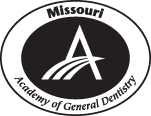|

|
|
Welcome to the Missouri AGD Web site!
|
|
Check here for the latest news and happenings taking place in Missouri AGD!
Continuing Education in Curaçao 02.22.14 - 03.01.14 Course Outlines
Pulp Therapy in Primary and Young Permanent Teeth A. Review of AAPD/AAE Consensus Conference 2012 B. Pulp Anatomy & Physiology C. Clinical & Radiographic Evaluation of Pulp Health D. Medicaments Used in Pediatric Pulp Therapy
E. Pulpotomy & Pulpectomy F. Pulp Capping & Endodontics in Young Permanent Teeth
After this presentation and discussion, the participant should be
able to:
- Discuss the clinical and radiographic indications for pulpotomy,
pulpectomy, or extraction in primary teeth.
- Discuss the findings of the AAPD/AAE consensus conference held in November
2012 regarding the newest methodologies in treating young permanent teeth.
****************************************************************************************************************
Evidence Based Dentistry: Asking the Right Question to Get the Right Answer After completing the course the participant should be able understand the key skills of
evidence-based decision making:
1. Formulate patient-centered questions.
2. Search for appropriate evidence.
3. Critically appraise the evidence.
4. Apply the evidence to clinical practice.
Following this presentation the participants should be able to: - Identify characteristics of background and foreground questions.
- Given examples of questions, accurately identify the question as either being a background or foreground question.
- Given case scenarios, accurately identify the four PICO components of a foreground question and write it out in an appropriate question format.
- Given a clinical question, rewrite the question as a foreground/PICO question that includes all four PICO components in the appropriate PICO question format.
- Identify key characteristics of four types of foreground/PICO questions (i.e., therapy, harm, prognosis, diagnosis).
- Identify what constitutes evidence.
- Explain the difference between research and evidence.
- Identify sources of primary and secondary evidence.
- Discuss the difference between experimental and non-experimental research.
- Identify distinguishing characteristics of different research methods: randomized control, cohort, case control, case series, and case report studies.
- Discuss the difference between quantitative and qualitative research and the role of qualitative research in EBDM.
- Identify scientific sources of evidence to use in clinical decision making.
Section 2: Levels of Evidence
Following this section the participants should be able to:
- Identify the levels of evidence.
- Identify the type of study most appropriate to answer questions related to therapy/prevention, diagnosis, harm/etiology/causation, and prognosis.
- Explain how each research study design contributes to a continuum of knowledge.
- Identify at least two databases in which secondary and primary research can be found.
- Explain the type of research that can be found using PubMed, CINAHL, and the Cochrane Library database.
- Describe how PubMed is structured and discuss the key searching
components
- Find MeSH terms for a PICO question using the PubMed MeSH browser.
- Identify key questions in the critical appraisal process.
- Critique different study methodologies, such as randomized controlled trials and systematic reviews, using international guidelines and evaluation tools:
10. Evaluate Web-based resources.
11. Differentiate between common ways to report outcomes.
12. Discuss how the presentation of statistics can influence treatment decisions.
****************************************************************************************************************"Normal functional and para functional loading of teeth
for extended period of time (several decades), and in a repetitive cyclic
pattern will cause several types of mechanical failures at the micro and nano
levels. Although most of these failures cannot be seen clinically or radio
graphically, their effects can be precipitated in the tooth structures, and
their supporting and invested tissues, in the form of symptomatic and
asymptomatic ailments that can affect their functions and survivability. The
presentation will cover these ailments, their diagnosis, prevention and
treatments."
M. A. Marzouk, DDS, MSD Professor Emeritus, Restorative Dentistry
Washington University in St. Louis
************************************************************************************************
Treatment Planning for Facial Trauma
- Damage Assessment & Pain Control
- Radiographs
- Soft Tissue Repair
- Treatment options for damaged teeth
- Cosmetic considerations
- Long term prognosis
- Follow up, & re-treatment options
|
|

